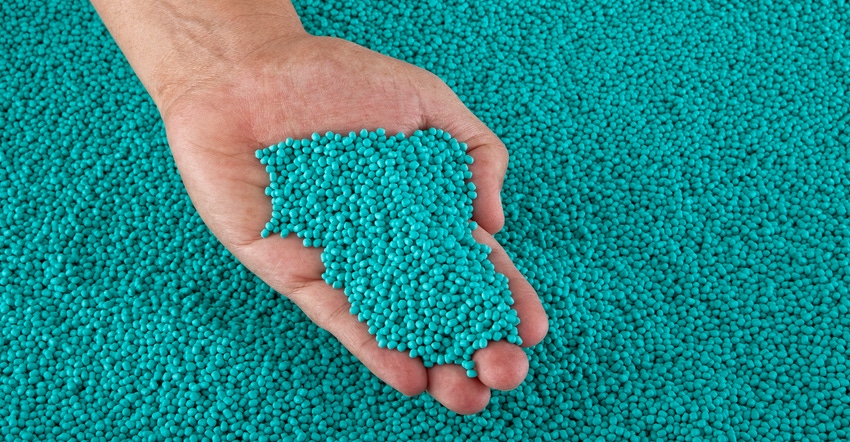United Nations Says Cutting Plastic Waste by 80 Percent by 2040 is Doable
A new United Nations report lays out a path that could cut plastic pollution by 80 percent by 2040, the authors contend. It calls for a “system change” with three key focuses: accelerating reuse; recycling; and reorienting and diversifying to sustainable alternatives to plastic. And it analyzes opportunities, impacts, and barriers associated with all three focuses.

A new United Nations report lays out a path that could cut plastic pollution by 80 percent by 2040, the authors contend. It calls for a “system change” with three key focuses: accelerating reuse; recycling; and reorienting and diversifying to sustainable alternatives to plastic. And it analyzes opportunities, impacts, and barriers associated with all three focuses.
Here are reported potential reduction metrics—all said to be achievable by 2040:
Reuse systems (like refillable bottles and takeback programs) could reduce plastic pollution by 30 percent by 2040. Strengthening the market for recycled plastics could spur another 20% drop on top of that figure. And sustainable alternatives could generate an additional 17% reduction.
Conversely, in a business-as-usual scenario, plastic production, currently at about 430 million metric tons a year, would triple by 2060. About two-thirds of the material produced today is quickly wasted; managing it comes with steep monetary costs.
But system change is high-priced too. Operating and maintenance outlays will likely initially increase to collect, sort, and manage more waste better. Though the cost is said to be less than the current investment trajectory, at roughly $65B per year through 2040, compared to $113B per year to continue along a linear path.
By the UN report’s account, a new circular plastics economy could create 700,000 jobs by 2040 (mainly in developing countries) and overall savings of $1.3TN when accounting for investment, operations, and management costs and recycling revenues. And it reportedly could prevent .5 gigatons CO2-equivalent greenhouse gas emissions a year.
A massive shift would take more than a village.
“The systems change cannot be done in isolation due to the cross-border flows of plastics, liabilities, and risks. It requires harmonized international action. Aligned and coordinated measures and obligations between nations and across value chains will build synergies and create a major shift in the plastics policy landscape,” the authors say.
They recommend a globally coherent approach to monitoring and reporting.
Here’s a breakdown of the three suggested market shifts:
The authors look at benefits, potential barriers, and recommendations to strengthen each approach.
Reuse and new delivery models. Once established, they are the most economical, after eliminating plastic. Reusables retain a higher value and are estimated to generate net savings of $1,289 per ton of plastic, while new delivery models are thought to generate $516 per ton of savings.
But reuse and delivery models have high private costs, an estimated $609B between 2021 and 2040, the authors say. The models require robust investments in infrastructure and services.
“This market shift can be unlocked by improving the economics of reuse (which is in turn supported by aligning design and sharing of reuse elements to enable economies of scale),” the authors say.
Among elements deemed critical for success are strategic collection points, return incentives, reverse logistics (including washing and sanitation), labeling, and communication.
Recycling. A key takeaway is that cheap virgin plastic impedes growth of the secondary materials market. Subsidies for recycling technologies or changes in availability or price of feedstock will be important to overcome this hurdle. Though it’s believed the industry will recover costs for certain technologies by 2040; the report names gasification.
One recommendation to level the playing field is a virgin plastic tax or levy. Another is extended producer responsibility policies that modulate fees to favor easier-to-recycle products and those incorporating recycled content.
The authors also suggest incentivizing and de-risking investments in recycling infrastructure by including minimum recycled content criteria in public procurement or long-term offtake contracts to guarantee demand for recycled polymers.
They call for a focus on packaging and product design to make collection and sorting easier while avoiding compatibility issues among different materials in the waste stream. This will entail shifting from flexible, multilayer, and multimaterial plastics to more rigid and mono-materials, as well as eliminating additives and pigments.
Designing for recyclability could increase profitability from $120 per metric ton to $240 per metric ton, according to the report. And it could drive an uptick in plastics that are recyclable mechanically— from today’s roughly 21 percent to over 50 percent in 2040.
The authors also point to the need for new sorting and aggregation models; technology or financing to capture more low-value plastic in remote and low-income regions; and technology to work with more feedstock compositions.
Reorienting and diversifying. Some plastics from short-lived products cannot be eliminated or switched to reuse models but remain problematic because they are non-recyclable or have high littering rates, the authors say.
They recommend considering substituting traditional plastics with other materials if there is evidence, based on lifecycle analyses, that the alternatives are environmentally and socially sound and will have no unintended consequences.
The most sustainable material substitutions are more expensive (one and a half to twice the cost of plastics), and when shifting to compostable products, there will be high infrastructure costs and costs for segregation of collected materials.
But they see potential for economic development, estimating the industry for paper and compostables can create around three million jobs globally by 2040 from plastic substitutes alone. For the waste management industry in particular the need to segregate materials will increase the value of their services and potentially open up opportunity to diversify into, or expand their, composting operations, the authors note.
They conclude:
“The current approach to tackling the global plastic pollution crisis has not proven sufficient. Plastic production continues to rise, and concerns over well-documented human health risks from plastic pollution are increasing …
“The evidence is clear: policymakers and governments, industry and private leads, and stakeholders across the board have in their hands the most significant opportunity to turn off the tap and solve plastic pollution.”
About the Author(s)
You May Also Like




